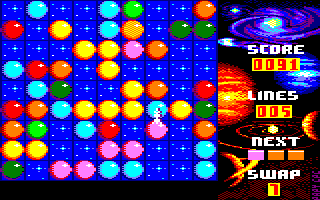
Color Lines
(Futility Games, 2010)
This puzzle game is played on a 9×9 board with tiles of varying colours. Before each turn, three new tiles are added randomly to the board, and in each turn, you must move one tile and attempt to form one or more lines of at least five tiles of the same colour. Doing this will clear those tiles from the board, and you are then allowed to make an additional move before the turn is over. The catch is that to move a tile from one square to another, there must be a clear path to the new square, so you must think carefully about how to move and position your tiles. The game is based on an MS-DOS game from 1992 called Lines, and the presentation is top-notch, with sixteen different graphical themes drawn mainly by members of the French demo scene, and a wide variety of tunes to accompany each of them. The size of the grid means that it can become quite confined rather quickly, but it’s still a very good game.
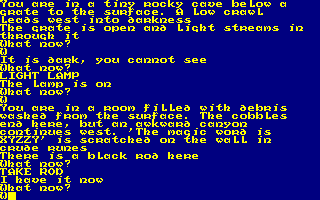
Based on the original Adventure by Will Crowther and Don Woods, Level 9’s take on the game still has your nameless protagonist on an underground search for treasures, but has expanded the game world significantly. Retrospectively branded the first in the Middle-earth trilogy, Colossal Adventure was originally a text-only adventure but was later re-released with added graphics as part of the Jewels of Darkness compilation. There’s a reason the original Adventure took off and it’s all in the gameplay. Clear and well thought out puzzles with a built-in transportation system that’s light years ahead of its time, Colossal Adventure is a faithful retelling of a landmark game. It won’t win prizes for originality, but the atmosphere and feel of the game hold up to this day. While a few software houses tried to bring Adventure to the CPC, this is the best version.
See also: Adventure Quest, Dungeon Adventure.
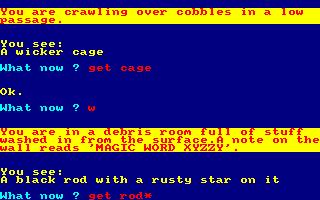
Of all the versions of Will Crowther and Don Woods’ Adventure on the CPC, this is probably the poorest. From a plot point of view, the game is top-notch, following closely to the seminal template. However, where Colossal Cave Adventure lets itself down is in its dreadful response speed and presentation. The game takes a virtual ice age to respond to each of your commands, and although having no graphics doesn’t hinder the gameplay, the choice to have red text superimposed on a yellow box against the CPC’s regular blue background is really ugly. The game is also written entirely in unprotected BASIC. The sloppy execution would be bad enough in normal circumstances, but when you compare it to the much slicker versions released around the same time or even earlier, it makes Duckworth’s interpretation seem all the poorer.
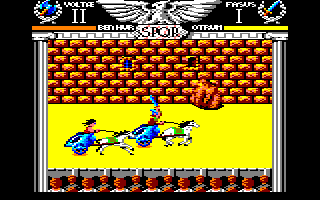
Colosseum
(Topo Soft/Kixx, 1988)
Benurio is a soldier who has been accused of treason and disloyalty to the Roman Empire. To prove his loyalty, he must take part in a chariot race – but the other contestants are set on killing him! As Benurio, your aim is not to win each of the four races, but simply to survive. Each race consists of eight laps, and each course contains obstacles that you must avoid. You can choose to fight your opponents, and if you win, you can obtain their weapon, or alternatively, you can try to force them into one of the obstacles on the course. The graphics and animation are of a high standard, and a suitably imperial tune plays on the menu, although in-game sound effects are limited to the galloping of your horse. However, the races are too long and the gameplay soon becomes quite repetitive.
![]() Watch a YouTube video of this game by:
jgonza.
Watch a YouTube video of this game by:
jgonza.
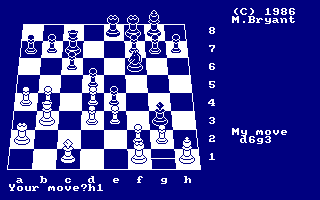
Colossus Chess 4
(CDS, 1986)
Chess has never been my forte, and it shows when I’m playing against the computer in this game. It includes an openings database of around 3,000 positions, and it has been tested against many competing chess programs of the time and has beaten them comprehensively. It is highly customisable, although changing configurations isn’t user-friendly; there are no menus, so you’ll have to remember which keys to use or resort to the instruction manual frequently. You can view your previous moves, and a nice touch is that you can see the computer thinking ahead, and what move it thinks you’re going to make. The perspective view of the board is great as well, although you can change it to a more traditional 2D view. This is generally considered to be the best chess program on the CPC, and it’s not hard to see why.
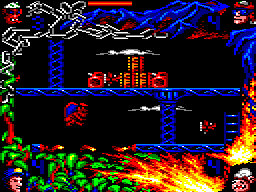
Comando Quatro
(Zigurat, 1989)
Four beings – a World War II fighter pilot, a devil, a miner and an albino gorilla – have been mysteriously transported to another world. Each one begins the game in a different zone – a military base, a cemetery, a mine or a jungle – but their minds and bodies are linked, which means that you can change the character you are controlling and swap them between zones. Understanding their characteristics and knowing which one to select in any given situation is vital in order to progress in this platform game. However, the game constantly changes the zone you are currently in every few seconds, just to make things more confusing! The gameplay is not as complicated as it seems, although it’s easy to select the wrong character when you’re losing lots of energy. On the other hand, the graphics are very colourful and appealing.
![]() Watch a YouTube video of this game by:
jgonza.
Watch a YouTube video of this game by:
jgonza.
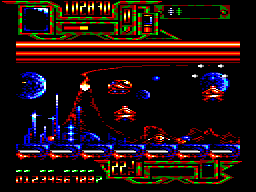
Comando Tracer
(Dinamic, 1988)
The three planets belonging to the XATOR Confederation – Zorak, Alfard and Grisum – have been taken over by intelligent androids, and the only way to remove them is to destroy the planets. It seems a rather drastic solution! Explosive devices have been placed on each of the planets, and you have to arm them by flying around the planets and collecting batteries to insert into them; each device requires three colours of battery. This game was re-released in the UK as The Last Commando, and it’s a very good space shoot-’em-up indeed. The graphics and music are both up to Dinamic’s high standards, although completing the game requires a lot of luck as well as skill.
![]() Watch YouTube videos of this game by:
jgonza,
Retro Danuart.
Watch YouTube videos of this game by:
jgonza,
Retro Danuart.
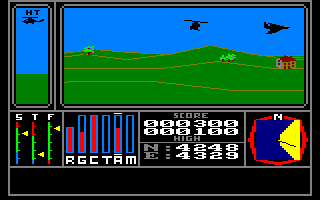
The thing that impresses the most about Combat Lynx is the rolling landscape effect that has been created as you fly over the hills and villages. It really is an impressive graphical trick and it’s worth loading up just to take a look at this alone. The rest of the game is also rather good. The loading screen is rather poor but the wireframe rotating helicopter when you are landed at a base looks excellent. Your engine noise is unobtrusive, which is always good. In terms of gameplay this is another game that sits on that fine line between arcade and simulation. Most will be able to fly about OK but there are a lot of readouts to monitor and keys to remember. Despite the scalable difficulty it isn’t an easy game by any stretch. However, the various weapons, large map and good mission variety (it’s not all about combat) should see this game given a chance.
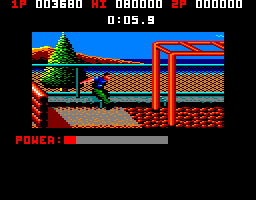
Combat School
(Ocean, 1987)
The Elite Marine Corps are the toughest army in the USA, and you’re aiming to be recruited and join their ranks. You’ll have to complete some gruelling events first to show your strength, including an assault course, three firing ranges, an iron man race, arm wrestling, and lastly, a fight with your combat instructor. If you beat him, you’re in, and you’ll be sent on a mission to rescue a hostage in a US embassy. This is one of those joystick-waggling (or perhaps that should be joystick-wrecking) games, and in all the times I’ve tried it, I’ve managed to complete the assault course once. Nice graphics, nice tunes; shame that it’s far too tough. If you’re strong enough to tackle the assault course, you’re probably good enough for the real thing!
![]() Watch YouTube videos of this game by:
jgonza,
Metr81,
Xyphoe.
Watch YouTube videos of this game by:
jgonza,
Metr81,
Xyphoe.
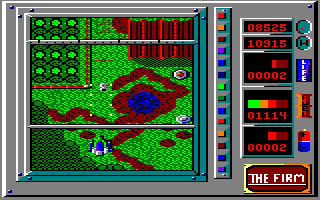
Combat Zone
(Alternative Software, 1987)
Colonel John D. Mentor has been called out of retirement to enter the Combat Zone. Flying your spacecraft through six levels, you must destroy ten enemy installations (represented as flashing objects on the ground) on each level using your unlimited supply of bombs, while simultaneously firing bullets at waves of alien enemies. Other ground targets can also be bombed to give you extra fuel; if you run out of fuel, the game ends. This is a fairly standard vertically scrolling shoot-’em-up with bright, colourful graphics, although this means that enemy fire can sometimes be difficult to distinguish from the backgrounds. However, the sound effects are poor, and the game is too easy – a fact that even the game’s authors seem to acknowledge when you complete the final level!
